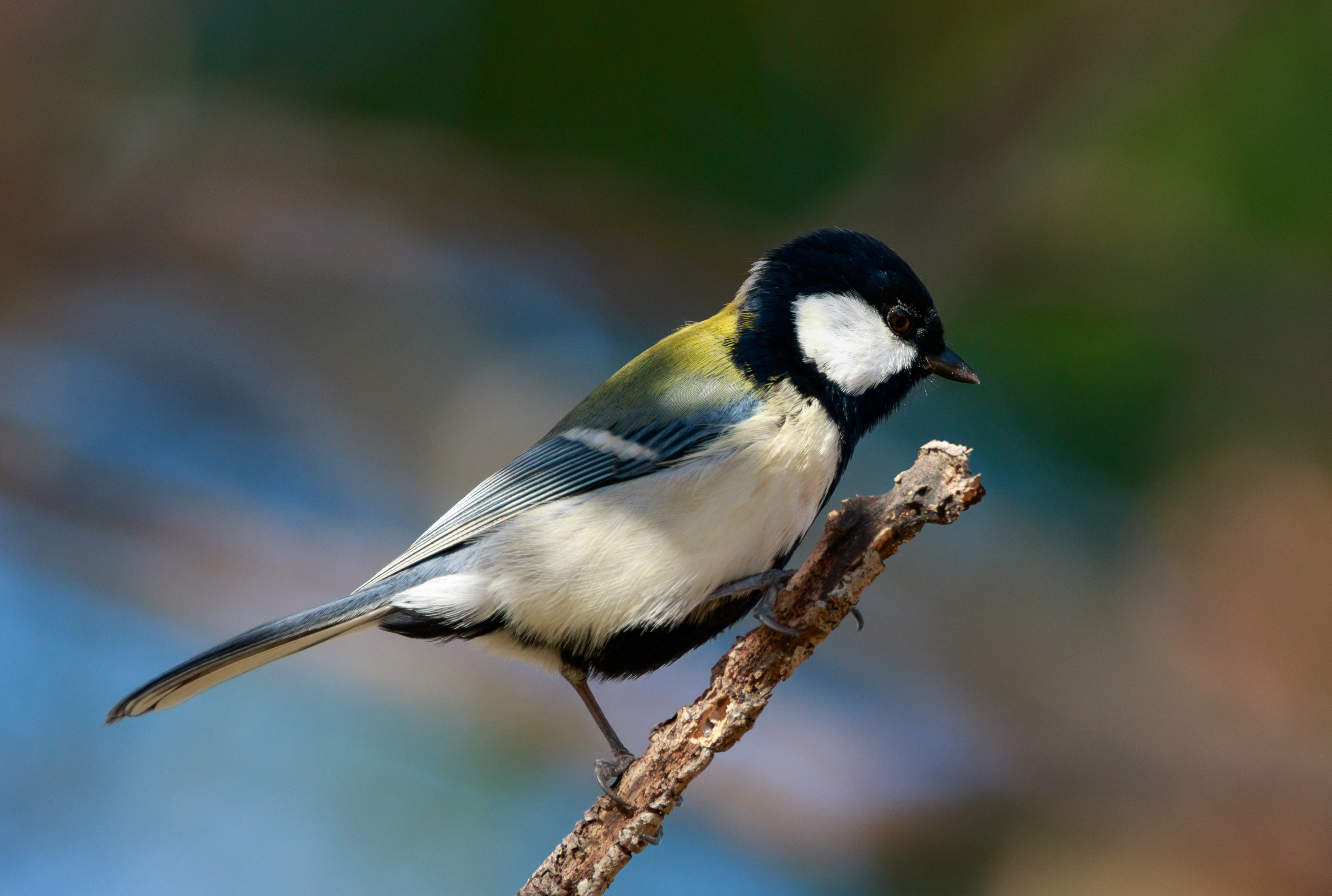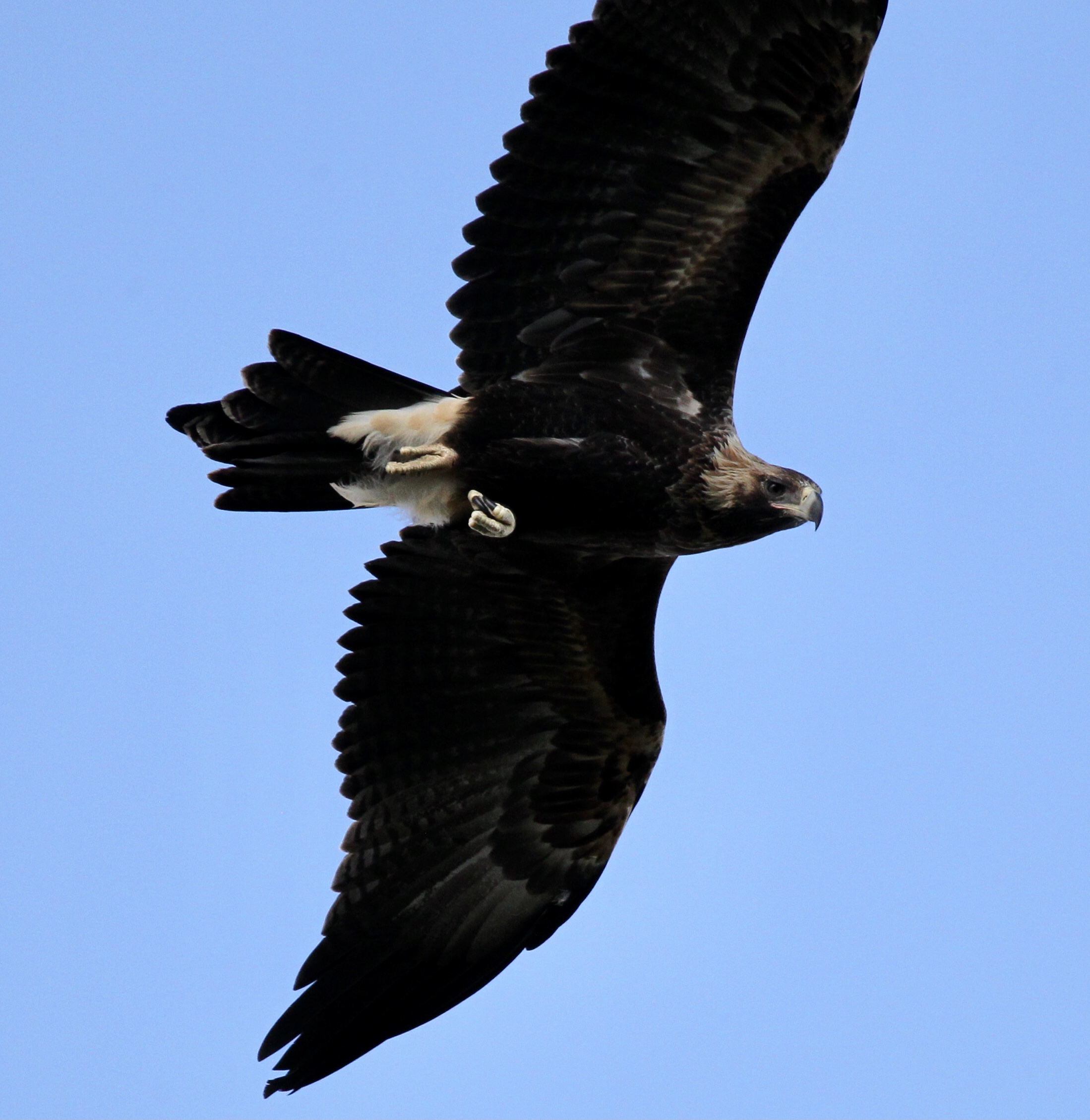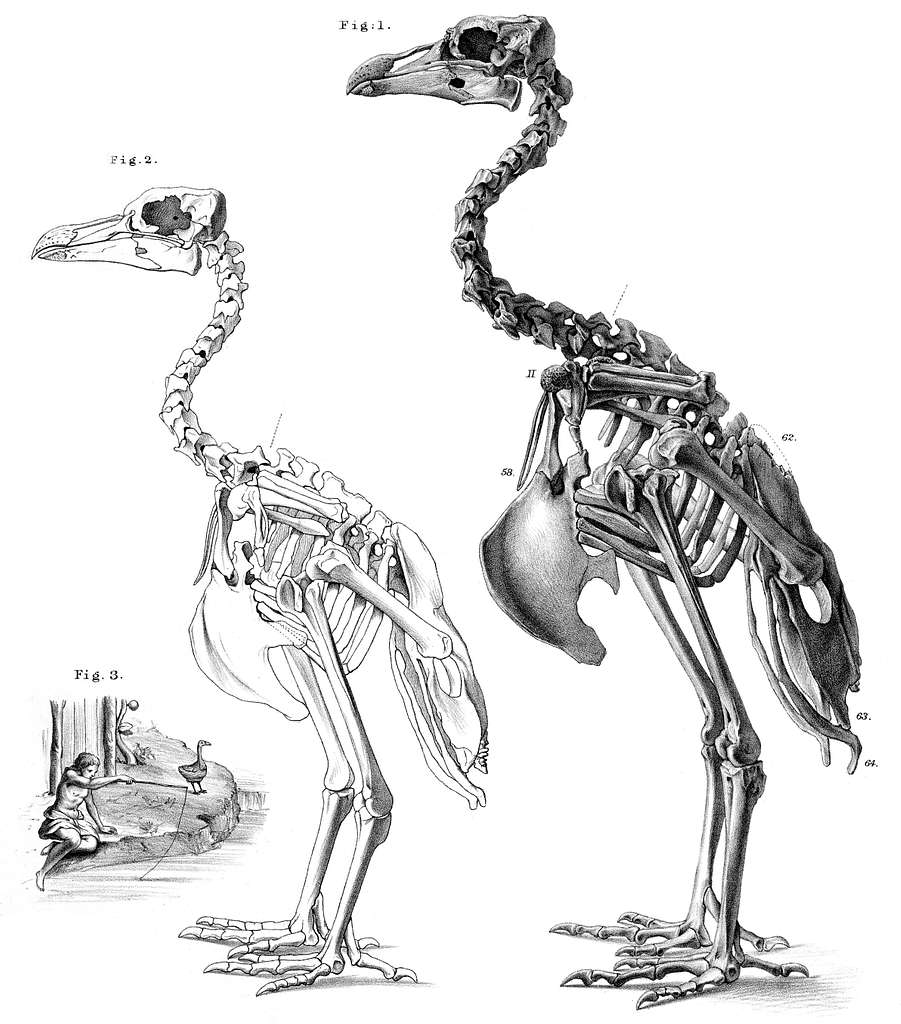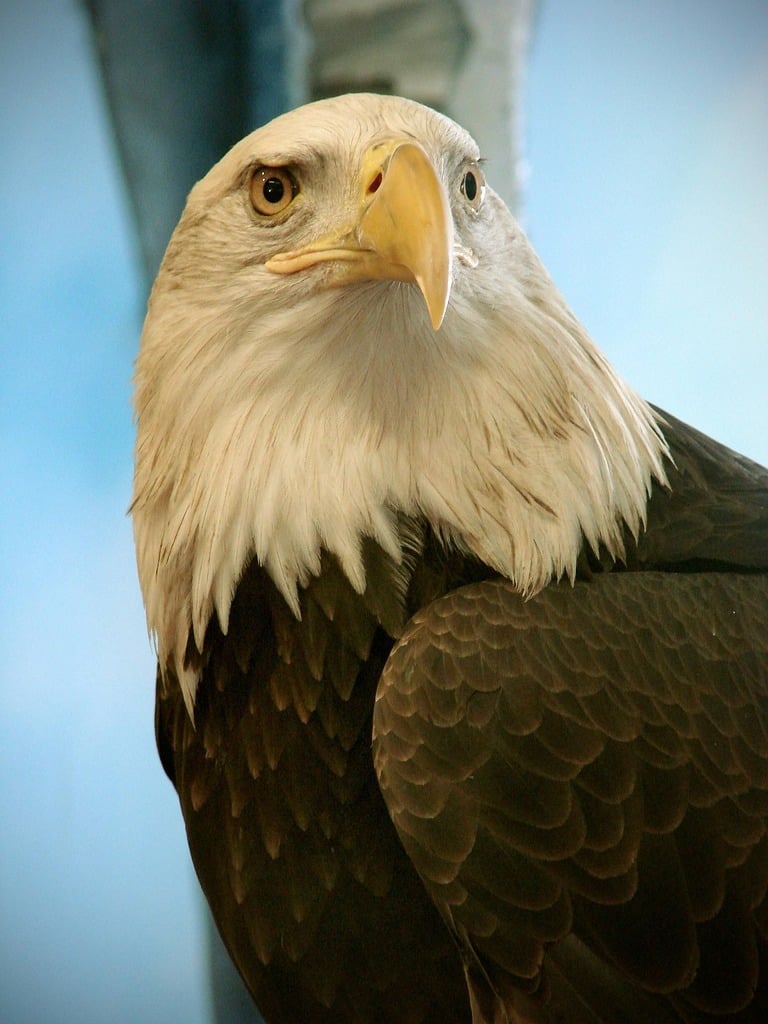Introduction

Australia is renowned for its diverse and unique wildlife, including its avian fauna. In this blog post, we will embark on a fascinating exploration of Australia’s largest bird species, showcasing their impressive size and captivating characteristics.
Australia’s avifauna is a testament to the country’s ecological richness and distinctiveness, with a wide variety of birds inhabiting its diverse habitats. Among them, several species have earned the distinction of being the largest in the land.
The purpose of this article is to shed light on these remarkable avian giants and delve into their intriguing features, habitats, and significance within the Australian ecosystem. By understanding the largest bird species in Australia, we can gain a deeper appreciation for the country’s avian biodiversity and the ecological roles these birds play.
In the sections that follow, we will explore four captivating bird species that hold the title of being the largest in Australia. We will start our journey with the Emu, known for its impressive height and distinctive appearance. Next, we will encounter the Southern Cassowary, a bird with a striking appearance and a reputation as a living dinosaur. Our exploration will then lead us to the Australian Bustard, an iconic bird known for its grace and adaptability. Finally, we will soar to great heights with the Wedge-Tailed Eagle, the largest bird of prey in Australia, renowned for its majestic presence in the skies.
Join us as we unravel the mysteries and marvels of these magnificent birds, fostering a deeper understanding of Australia’s avian wonders and the vital role they play in the country’s fragile ecosystems. So, let us spread our wings and embark on this captivating adventure into the world of Australia’s largest bird species.
Overview of the Largest Bird Species in Australia

Australia is home to a diverse array of bird species, including some of the largest in the world. In this section, we will explore the unique characteristics and habitats of four prominent avian giants: the Emu, Southern Cassowary, Australian Bustard, and Wedge-Tailed Eagle.
The Emu

At the forefront of Australia’s avian giants stands the Emu (Dromaius novaehollandiae), the largest bird species on the continent. Belonging to the ratite group, which includes flightless birds like ostriches and rheas, Emus can reach impressive heights of 1.9 to 2 meters (6.2 to 6.6 feet) and weigh between 30 to 45 kilograms (66 to 99 pounds).
Emus possess long, sturdy legs specially adapted for running at speeds of up to 50 kilometers per hour (31 miles per hour). Their feathers display an elegant blend of soft, brown hues, adorned with distinct dark and light bands. Although Emus have small vestigial wings, these structures are not used for flight but aid in balance and courtship displays.
Distributed across most of mainland Australia, Emus inhabit a variety of habitats, including forests, woodlands, grasslands, and semi-arid areas. They are opportunistic omnivores, consuming a varied diet of fruits, seeds, flowers, leaves, insects, and small animals. Their adaptability and foraging expertise contribute to their success in different ecosystems.
One notable characteristic of Emus is their resonant booming call, which carries over long distances. This vocalization plays a crucial role in communication and mate attraction within their social structures.
The Southern Cassowary
Moving on to another impressive Australian bird, we encounter the Southern Cassowary (Casuarius casuarius). While not as tall as the Emu, the Southern Cassowary possesses a unique appearance and significant size. These birds stand approximately 1.5 to 1.8 meters (4.9 to 5.9 feet) in height and can weigh between 58 and 60 kilograms (128 and 132 pounds).
Southern Cassowaries exhibit distinct physical attributes, including a striking crest on their heads and bright blue and red wattles on their necks. Their plumage primarily consists of coarse black feathers, serving as formidable protection.
These magnificent birds are native to the tropical rainforests of northeastern Australia, particularly in Queensland. They also inhabit New Guinea and parts of Indonesia. The Southern Cassowary’s choice of habitat reflects their preference for dense vegetation, where they forage for fruits, seeds, and other plant material.
Despite their impressive size, Southern Cassowaries are agile runners and can reach speeds of up to 50 kilometers per hour (31 miles per hour). They possess sharp claws on their feet, which they use for defense, making them a formidable presence in their environment.
The Australian Bustard
The Australian Bustard (Ardeotis australis) is another notable member of Australia’s avifauna, showcasing its grandeur across the country’s open grasslands, woodlands, and arid regions. While not as towering as the Emu and Southern Cassowary, the Australian Bustard still commands attention with its size, reaching heights of up to 1.2 meters (3.9 feet) and weighing between 6 and 14 kilograms (13 and 31 pounds).
These birds exhibit sexually dimorphic characteristics, with males generally larger than females. The Australian Bustard showcases an intricate blend of brown, gray, and white plumage, providing effective camouflage in its natural habitat.
Australian Bustards are known for their distinctive courtship displays, which involve elaborate dances and vocalizations to attract mates. They have a broad diet that includes grasses, seeds, fruits, insects, small reptiles, and even small mammals.
The Wedge-Tailed Eagle


Rounding out our exploration of Australia’s largest birds is the Wedge-Tailed Eagle (Aquila audax). As the largest bird of prey on the continent, the Wedge-Tailed Eagle brings an element of awe to the skies. These eagles boast impressive wingspans of up to 2.7 meters (8.9 feet) and can weigh between 3 and 5.5 kilograms (6.6 and 12.1 pounds).
Wedge-Tailed Eagles are renowned for their remarkable flying abilities, utilizing thermal updrafts to soar to great heights. Their plumage features shades of brown, with distinct wedge-shaped tails that give them their name.
These majestic birds are distributed throughout mainland Australia, favoring a range of habitats, including forests, open woodlands, and arid regions. They are opportunistic hunters, preying on a variety of animals, including small mammals, birds, and carrion.
With their commanding presence and impressive hunting prowess, Wedge-Tailed Eagles exemplify the powerful and majestic nature of Australia’s avian giants.
Closing Thoughts

In this section, we delved into an overview of the largest bird species in Australia, exploring the Emu, Southern Cassowary, Australian Bustard, and Wedge-Tailed Eagle. These remarkable birds captivate us with their size, adaptability, and unique characteristics, leaving an indelible mark on Australia’s diverse avian landscape. In the subsequent sections, we will delve deeper into the individual features and habitats of each bird, shedding light on their fascinating lives and contributions to Australia’s rich biodiversity.
The Emu: Australia’s Majestic Flightless Bird

The Emu, scientifically known as Dromaius novaehollandiae, is the largest bird in Australia and the second-largest bird in the world, surpassed only by the ostrich. As a member of the ratite family, the Emu is a flightless bird. It is native to Australia and can be found in diverse habitats such as forests, woodlands, grasslands, and coastal regions.
Standing tall at 1.9 meters (6.2 feet) and weighing between 30 to 45 kilograms (66 to 99 pounds), the Emu possesses a slender neck, a small head with a sharp beak, and strong legs with three toes. Its feathers are predominantly brownish-black, complemented by a distinctive patch of pale blue skin on its neck.
One captivating aspect of Emu behavior is their unique reproductive strategy. Unlike most birds, the male Emu takes on the responsibility of incubating the eggs and raising the chicks. After mating, the female lays several large, dark green eggs in a nest constructed by the male. He then diligently incubates the eggs for approximately eight weeks and provides protection and guidance to the hatchlings once they emerge.
Emus are herbivores with a diverse diet that includes various plants, fruits, seeds, and insects. Their adaptability is remarkable, as they can endure extreme temperatures ranging from freezing cold to scorching heat. This resilience is facilitated by their physiological adaptations, such as reduced feather density and efficient thermoregulation.
In addition to their biological significance, Emus hold great cultural and practical importance. In Australian Aboriginal culture, they are symbolically associated with endurance, resourcefulness, and resilience, and are featured in indigenous stories, artwork, and ceremonies. Furthermore, Emus are raised for their lean, low-fat meat and their oil, which finds applications in various industries. Emu feathers are also utilized in crafts, fashion, and decorative items.
The Emu’s impressive size, unique characteristics, and cultural and practical significance make it a captivating and iconic bird of Australia.
The Southern Cassowary: A Magnificent Giant

The Southern Cassowary (Casuarius casuarius) is widely recognized as Australia’s largest bird, boasting an awe-inspiring presence and distinctive appearance.
Description
The Southern Cassowary is a large flightless bird that towers above its surroundings. Males typically stand between 1.5 to 1.8 meters (5-6 feet) tall, although exceptional individuals have been recorded at over 2 meters (6.6 feet). Females are slightly smaller but still substantial in size. This remarkable bird is adorned with coarse black feathers, accentuated by vibrant blue skin on its neck and head. One of its most striking features is the large bony casque atop its head, reaching up to 18 centimeters (7 inches) in height.
Habitat
The Southern Cassowary primarily inhabits the tropical rainforests of northeastern Australia, particularly in the regions of Queensland and New South Wales. It can also be found in parts of Papua New Guinea and Indonesia. These lush and diverse habitats provide an ideal environment for the cassowary’s survival.
Behavior
Known for their solitary and reclusive nature, cassowaries prefer to navigate their surroundings alone, rarely encountering other members of their species. Despite their imposing size, these birds display remarkable agility, effortlessly maneuvering through the dense vegetation of their rainforest habitat.
The Southern Cassowary exhibits exceptional swimming skills and can achieve remarkable speeds, reaching up to 50 kilometers (31 miles) per hour. This extraordinary agility enables the cassowary to evade potential threats and navigate its environment with ease.
Diet
As an omnivorous bird, the Southern Cassowary has a diverse diet. It consumes a variety of fruits, including fallen fruits, as well as seeds and plants. Additionally, the cassowary plays a vital role in seed dispersal within its habitat. Its digestive system can process large seeds, which it consumes and later excretes, aiding in the dispersal and regeneration of plant species.
In conclusion, the Southern Cassowary stands as an awe-inspiring representative of Australia’s largest bird species. With its imposing size, distinct appearance, and unique ecological role, this magnificent bird contributes to the biodiversity and ecological balance of the tropical rainforests it calls home.
The Australian Bustard

The Australian Bustard (Ardeotis australis) is a remarkable bird native to Australia, known for its impressive size and unique appearance.
Size and Appearance
Measuring approximately 100 to 130 centimeters (39 to 51 inches) in length, the Australian Bustard is the largest bird found in Australia. Its wingspan ranges from 180 to 230 centimeters (71 to 91 inches), contributing to its majestic presence. Male bustards are larger and heavier than females, with males weighing around 7 to 14 kilograms (15 to 31 pounds) and females ranging from 4 to 6 kilograms (8.8 to 13.2 pounds).
The Australian Bustard’s plumage is predominantly brown, adorned with a captivating mottled pattern on its upper body, blending with its surroundings. During the breeding season, the male bustard displays a large head with a prominent neck wattle, adding to its unique charm.
Distribution and Habitat

Australian Bustards are found across mainland Australia, except for densely forested regions in the southeast and southwest. They have adapted well to diverse habitats such as grasslands, savannas, open woodlands, and arid regions, showcasing their resilience and adaptability.
Behavior and Diet
Australian Bustards are primarily terrestrial birds, known for their ground-dwelling habits. They are also capable of impressive flight when necessary. These omnivorous birds have a varied diet consisting of insects, small vertebrates, seeds, fruits, and carrion. Their opportunistic feeding habits allow them to adapt to the available resources in their habitat.
In conclusion, the Australian Bustard is a remarkable bird that contributes to the rich avian diversity of Australia. Its impressive size, unique appearance, and adaptability to various habitats make it a vital player in maintaining ecological balance.
The Wedge-Tailed Eagle
The Wedge-Tailed Eagle is an iconic bird of prey, holding the distinction of being both the largest bird of prey and the largest bird species in Australia.
Description
The Wedge-Tailed Eagle is a majestic bird with a distinctive wedge-shaped tail. Its plumage is predominantly dark brown, while its head and neck display a lighter, pale coloring. This raptor boasts a prominent hooked beak, powerful legs, and sharp talons, enabling it to effectively catch and carry its prey.
Size and Wingspan
On average, the Wedge-Tailed Eagle measures between 80 and 106 centimeters (31 to 42 inches) in length, with females typically being larger than males. However, its most awe-inspiring feature is its wingspan, which can reach an impressive 210 to 230 centimeters (7 to 7.5 feet), making it one of the bird species with the longest wingspans.
Habitat and Range
The Wedge-Tailed Eagle is widely distributed throughout mainland Australia, favoring habitats such as woodlands, open plains, and mountainous regions. It thrives in environments that offer access to open spaces, facilitating its hunting endeavors.
Diet and Hunting

As a raptor, the Wedge-Tailed Eagle exhibits a diverse diet. It scavenges carrion but is also an active hunter, preying on mammals like rabbits, wallabies, and small marsupials. Additionally, it may consume reptiles, birds, and insects when the opportunity arises.
In conclusion, the Wedge-Tailed Eagle is an awe-inspiring bird that embodies strength, grace, and adaptability. Its majestic presence, remarkable size, and extensive wingspan make it a symbol of Australia’s avian diversity and natural heritage.
The Southern Cassowary: A Magnificent Flightless Bird

The Southern Cassowary, native to the tropical rainforests of northeastern Australia, is one of the world’s largest and heaviest flightless birds. Standing at an impressive average height of 1.5 to 1.8 meters, it ranks as the second tallest bird in Australia, surpassed only by the Emu. What truly distinguishes the Southern Cassowary is its remarkable weight, with males weighing up to 60 kilograms and females reaching approximately 45 kilograms.
Sporting a unique appearance, the Southern Cassowary features a tall casque-like structure atop its head. This tough, spongy casque serves as protection against falling debris in the rainforest. With predominantly black plumage, the bird’s neck stands out with vibrant blue skin and colorful neck wattles that vary in size and shape among individuals.
These magnificent creatures are renowned for their powerful legs and large, clawed feet, which they employ for both defense and foraging. They can sprint at remarkable speeds of up to 50 kilometers per hour and effortlessly leap over obstacles. While the Southern Cassowary primarily feeds on fruits, it also displays omnivorous behavior by consuming insects, small vertebrates, and even carrion.
The Southern Cassowary thrives in dense rainforests, swamps, and mangrove forests. These birds play a crucial role in seed dispersal, as they consume a variety of fruits and spread undigested seeds throughout the ecosystem, contributing to the ecological diversity and regeneration of the rainforest.
Despite its formidable presence, the Southern Cassowary faces numerous threats to its survival. Habitat loss resulting from deforestation, vehicle collisions, and predation by feral animals pose significant challenges. Conservation efforts, including the establishment of protected areas and educational initiatives to raise awareness about their importance, have been implemented to safeguard these majestic birds.
In conclusion, the Southern Cassowary stands as an awe-inspiring bird, ranking among the largest and heaviest flightless species not only in Australia but also worldwide. Its imposing size, unique features, and ecological role in rainforest ecosystems make it a remarkable and vital component of Australia’s avian diversity. However, urgent conservation measures are necessary to ensure the continued existence of these majestic creatures and the preservation of their extraordinary natural habitats.
Frequently Asked Questions
What is the largest bird in Australia?
The Emu holds the title of being the largest bird in Australia. It stands at an impressive height of 1.9 to 2 meters (6.2 to 6.6 feet) and weighs between 30 to 45 kilograms (66 to 99 pounds).
Is the Emu the largest bird in the world?

No, the Emu is not the largest bird in the world. It is the second-largest bird, with the ostrich claiming the title of the largest bird species globally.
Where can the Emu be found in Australia?
Emus are distributed across most of mainland Australia. They inhabit a variety of habitats, including forests, woodlands, grasslands, and semi-arid areas.
What is the size of the Southern Cassowary, and where is it found?
The Southern Cassowary stands approximately 1.5 to 1.8 meters (4.9 to 5.9 feet) in height. It is primarily found in the tropical rainforests of northeastern Australia, particularly in Queensland. It also inhabits New Guinea and parts of Indonesia.
What is the wingspan of the Wedge-Tailed Eagle?

The Wedge-Tailed Eagle has an impressive wingspan of up to 2.7 meters (8.9 feet), making it the largest bird of prey in Australia.

Leave a Reply